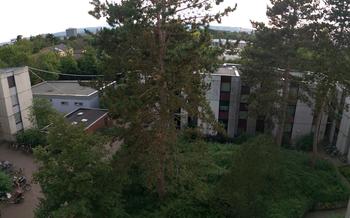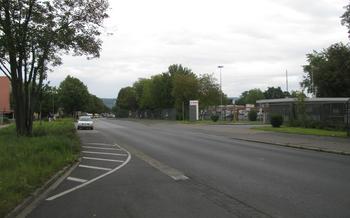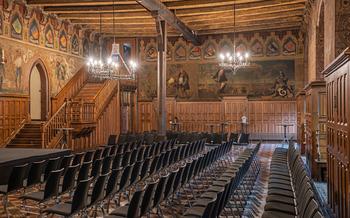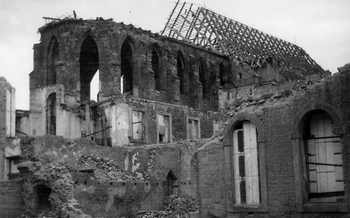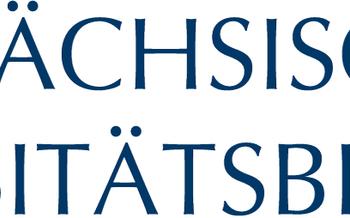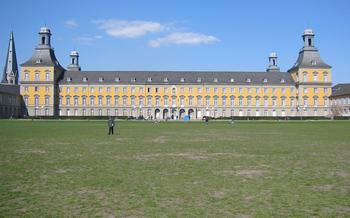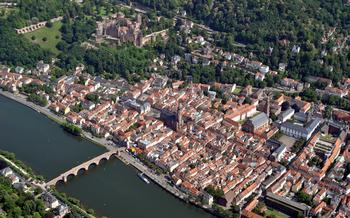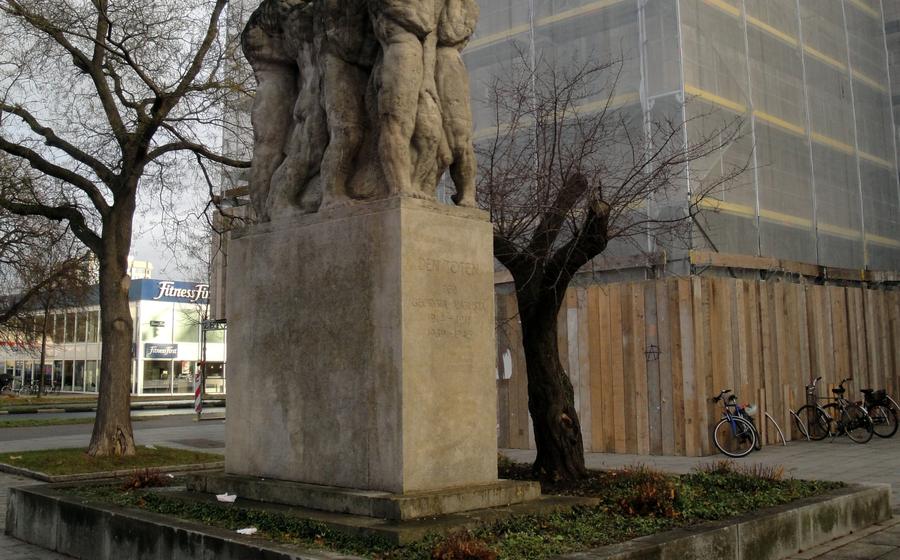
Georg August Universität Göttingen
- Georg August Universität Göttingen
- Campus Tour
- The Botanical Garden
- The University Museum
- The Auditorium
- The Observatory
- Student Life
- The Old Town Hall
- The Town Hall Square
- St. John's Church
- The Augustinerkloster: A Cultural Gem in Göttingen's Heart
- Insider Tip
Georg August Universität Göttingen
The Georg-August-Universität Göttingen, also known as Göttingen University, is a public research university located in Göttingen, Germany. Founded in 1737 by King George II of Great Britain and Elector George II of Hanover, the university is one of the oldest and most prestigious in Germany. Göttingen has a long and distinguished history, with a reputation for academic excellence and groundbreaking research. It has been associated with 45 Nobel laureates, including Max Planck, Otto Hahn, and Maria Goeppert-Mayer, and has produced numerous influential thinkers and scholars in various fields.
Currently, the university offers a wide range of academic programs across various faculties, including the Faculty of Humanities, the Faculty of Law, the Faculty of Business and Economics, the Faculty of Mathematics and Computer Science, the Faculty of Physics, the Faculty of Chemistry, the Faculty of Biology and Pharmacy, and the Faculty of Medicine. Göttingen is known for its strengths in the natural sciences, social sciences, and humanities, attracting students and researchers from around the world.
Campus Tour
Exploring the Georg August Universität Göttingen campus is a journey through history, architecture, and academic excellence. Whether you choose to embark on a guided tour or wander at your own pace, there are countless highlights to discover.
The Central Campus is the heart of the university, featuring iconic buildings such as the Aula (Main Auditorium) and the Paulinerkirche (St. Paul's Church). The Aula, with its neoclassical façade and grand interior, has hosted countless lectures, ceremonies, and historical events. The Paulinerkirche, once a Dominican monastery, now serves as a venue for concerts, exhibitions, and academic gatherings.
Another architectural gem is the New University Library, a modern masterpiece designed by renowned architect Frei Otto. Its striking tent-like structure houses a vast collection of books, manuscripts, and digital resources, making it a hub for research and scholarship.
Don't miss the Botanical Garden, an oasis of tranquility amidst the bustling city. Established in 1736, it showcases a diverse collection of plants from around the world, including rare and endangered species. Take a leisurely stroll through the greenhouses and outdoor gardens, and learn about the fascinating world of botany.
For a glimpse into the university's scientific achievements, visit the University Museum. Its exhibits cover a wide range of disciplines, from natural history to physics and astronomy. Interactive displays and hands-on activities make learning fun and engaging for visitors of all ages.
Practical Information:
- Guided tours of the campus are available in English and German. Check the university's website for schedules and booking information.
- Self-guided tours are also possible. Campus maps and guides are available at the Information Center in the Central Campus.
- Opening hours and admission fees vary depending on the facility. Please check the respective websites or inquire at the Information Center for details.
The Botanical Garden
The University of Göttingen's Botanical Garden is a flourishing oasis of greenery and biodiversity, with a rich history dating back to the 18th century. Founded in 1736 by Albrecht von Haller, a renowned physician and botanist, the garden initially served as a medicinal herb garden, providing plants for medical research and teaching.
Over the years, the garden expanded and evolved, becoming a significant center for botanical research and education. It currently houses over 12,000 plant species from around the world, meticulously arranged in various themed gardens and greenhouses. Visitors can explore the diverse collections, including the Alpine Garden, Rose Garden, and Tropical Greenhouse, each offering a unique glimpse into the world of plants.
Guided tours and workshops are available for those seeking a deeper understanding of the garden's flora and its significance in scientific research. Educational programs and workshops cater to visitors of all ages, fostering a love for nature and promoting environmental awareness.
Practical Information:
- Location: Untere Karspüle 2, 37073 Göttingen
- Hours: Daily from 9 am to 5 pm, except December 24th and 25th.
- Admission: Free of charge
- Guided Tours: Offered regularly. Please check the garden's website or inquire at the information desk for schedules and availability.
The University Museum
The University Museum, a treasure trove of scientific and natural wonders, has been captivating visitors with its awe-inspiring exhibits since 177With a focus on natural history and science, the museum showcases a diverse collection of specimens, artifacts, and interactive displays that illuminate the wonders of the natural world.
History and Exhibits
The University Museum's origins can be traced back to the 18th century, when renowned scientist and physician Albrecht von Haller donated his extensive collection of natural specimens and medical instruments to the university. Over the years, the museum expanded its collection and reputation, becoming a hub for scientific research and education.
Today, the University Museum boasts a diverse range of exhibits, including an impressive collection of fossils, minerals, and taxidermied animals. Visitors can marvel at the towering skeleton of a blue whale, explore the fascinating world of insects, and delve into the intricate workings of the human body through anatomical models and exhibits.
Focus on Natural History and Science
The museum's primary focus on natural history and science is evident in its exhibits. Visitors can learn about the evolution of life on Earth, the diversity of animal and plant species, and the intricate workings of the human body. Interactive displays and hands-on exhibits encourage visitors to engage with the material and gain a deeper understanding of the natural world.
Interactive Displays and Activities
The University Museum provides an immersive and engaging experience through its interactive displays and activities. Visitors can participate in virtual fossil excavations, explore 3D models of the human body, and conduct hands-on experiments in the museum's science lab. These interactive elements make learning fun and accessible for visitors of all ages.
Admission Fees and Hours
Admission to the University Museum is free of charge. The museum is open to the public from Tuesday to Sunday, with extended hours on Thursdays. Guided tours are available for groups upon request, offering a deeper dive into the museum's collection and history.
The Auditorium
The Auditorium, also known as the Aula, is a magnificent concert hall and event venue located at the heart of the Georg August Universität Göttingen. Completed in 1865, this neoclassical masterpiece was designed by renowned architect Conrad Wilhelm Hase and has become an iconic landmark of the university and the city.
With its grand facade and elegant interior, the Auditorium exudes an aura of grandeur and sophistication. The spacious hall features a tiered seating arrangement that can accommodate over 800 spectators, offering excellent views of the stage from every seat. The intricate ceiling frescoes, ornate chandeliers, and marble columns create a visually stunning backdrop for performances.
Throughout its history, the Auditorium has hosted countless prestigious events, including academic ceremonies, concerts by renowned musicians, and lectures by distinguished scholars. It has witnessed groundbreaking scientific discoveries, inspiring speeches, and captivating performances that have left an indelible mark on the university's legacy.
Today, the Auditorium continues to be a vibrant hub for cultural and academic activities. It hosts a diverse range of events, including concerts by the Göttingen Symphony Orchestra, theater productions, film screenings, and lectures by visiting scholars. The Auditorium is also a popular venue for conferences, seminars, and graduation ceremonies.
For visitors interested in experiencing the grandeur of the Auditorium, guided tours are available. These tours provide insights into the history, architecture, and significance of this iconic venue. Visitors can also attend one of the many events held throughout the year to immerse themselves in the vibrant cultural atmosphere of the Georg August Universität Göttingen.
The Observatory
The University of Göttingen Observatory, the oldest university observatory in Germany, is a testament to the institution's enduring commitment to scientific research and exploration. Founded in 1751 by the astronomer Tobias Mayer, it is nestled atop a hill overlooking the city of Göttingen, providing breathtaking views of the surrounding landscape.
With the acquisition of a 2-inch refracting telescope in 1818, the observatory began its ascent to prominence. Under the directorship of Karl Ludwig Harding, who discovered the asteroid Juno in 1804 and calculated the orbit of the comet of 1835, the observatory gained international recognition. It was during this time that the observatory's reputation for groundbreaking research was cemented.
Today, the observatory continues to be a hub of astronomical research and education. Equipped with state-of-the-art telescopes and instruments, it enables scientists to probe the depths of the cosmos, unraveling the mysteries of distant galaxies, pulsars, and exoplanets. Visitors to the observatory can join public stargazing events, where they can gaze upon the celestial wonders through the telescopes and learn about the latest discoveries in astronomy.
To delve deeper into the world of astronomy, guided tours and workshops are offered, shedding light on the history of the observatory, the science of celestial navigation, and the latest advancements in astrophysics. These interactive experiences are tailored to both enthusiasts and those new to the wonders of the night sky.
The observatory is conveniently located on Geismar Landstraße 11, a short walk from the city center. Admission fees are nominal, and guided tours are available at specific times. Whether you're an astronomy buff or simply seeking a unique and educational experience, the University of Göttingen Observatory is a must-visit destination.
Student Life
At the Georg August Universität Göttingen, student life extends far beyond the lecture halls and libraries. The university boasts a vibrant and diverse community of students from all over the world, who come together to form a rich tapestry of cultural and social experiences.
There are over 100 student organizations and clubs catering to a wide range of interests, from sports and music to politics and social activism. These organizations provide a platform for students to connect, collaborate, and pursue their passions outside of the classroom, fostering a sense of camaraderie and belonging.
The university also organizes numerous cultural and social events throughout the year, including concerts, theater performances, film screenings, and exhibitions. These events showcase local and international talent, fostering a vibrant cultural scene on campus.
Sports facilities and activities are also a big part of student life in Göttingen. The university has its own sports center, which offers a wide range of indoor and outdoor facilities for students to stay active and healthy. There are also numerous sports clubs and teams that students can join, providing opportunities for competition, camaraderie, and personal growth.
The international student community is a vital part of the university's identity. Göttingen attracts students from over 120 countries, creating a truly global and diverse campus environment. International students bring their unique perspectives, experiences, and cultures to the university, enriching the learning and social experience for everyone.
The Old Town Hall
The Old Town Hall of Göttingen, located in the heart of the city, stands as a testament to the city's rich history and architectural heritage. Built in the 13th century, it served as the seat of the city council and the administration for centuries, witnessing numerous significant events and decisions that shaped the course of Göttingen's development.
The Old Town Hall boasts an impressive Gothic architectural style, characterized by intricate stone carvings, pointed arches, and a striking stepped gable. Its façade is adorned with numerous decorative elements, including sculptures of saints and mythical creatures, reflecting the artistic and cultural influences of the time.
Inside, the Old Town Hall features a grand hall known as the Ratssaal, which once served as the meeting place for the city council. The hall is adorned with intricate ceiling paintings, elaborate chandeliers, and a collection of historical portraits that offer a glimpse into the city's past.
Over the years, the Old Town Hall has undergone several renovations and additions, adapting to the changing needs of the city. Today, it continues to serve as an important administrative building, housing various city government departments and offices.
Visitors to the Old Town Hall can take guided tours to explore its historic chambers, learn about its fascinating history, and admire the architectural details that make it a beloved landmark in Göttingen. The building is also open to the public for official events, exhibitions, and cultural programs, providing a unique opportunity to experience the vibrant atmosphere of this historic institution.
The Town Hall Square
The Town Hall Square (Rathausplatz) is the central square of Göttingen and a hub of activity. It has been the site of markets, festivals, and public gatherings for centuries, and its historical significance is evident in the surrounding buildings and landmarks.
The square is dominated by the Old Town Hall (Altes Rathaus), a Gothic masterpiece built in the 13th century. With its intricate carvings, pointed arches, and colorful facade, the Old Town Hall is one of the most iconic landmarks in Göttingen. It now houses the city's historical museum, providing a glimpse into the rich past of the city.
Other notable buildings on the square include the New Town Hall (Neues Rathaus), a Renaissance-style building completed in 1605, and the Gänseliesel Fountain (Gänselieselbrunnen), a symbol of Göttingen and a popular meeting spot for students and locals alike.
The square is also home to the St. John's Church (St. Johanniskirche), a Gothic church with a distinctive steeple. The church is known for its impressive stained glass windows and its role in the Protestant Reformation.
Throughout the year, the Town Hall Square hosts a variety of events, including weekly markets, festivals, and the famous Christmas market. The square is transformed into a magical winter wonderland during the holiday season, with festive decorations, twinkling lights, and the scent of mulled wine filling the air.
St. John's Church
St. John's Church, or Johanniskirche, is an impressive Gothic church located in the heart of Göttingen's Old Town. It is one of the city's most iconic landmarks and holds significant religious, historical, and architectural importance.
History and Architectural Style
The origins of St. John's Church date back to the 13th century when it was constructed as a Catholic parish church. Over the centuries, it underwent several renovations and expansions, resulting in a harmonious blend of architectural styles. The church's exterior boasts intricate Gothic elements, including pointed arches, ribbed vaults, and flying buttresses, which lend it an awe-inspiring grandeur.
Religious Significance and Services
St. John's Church serves as a vibrant center of worship for the Protestant community in Göttingen. Regular church services, including Sunday masses, are held throughout the week, attracting both local residents and visitors. The church's spacious interior, adorned with ornate stained glass windows, creates a serene and contemplative atmosphere conducive to prayer and reflection.
Notable Features and Artwork
The interior of St. John's Church is a treasure trove of artistic masterpieces. The intricate altar, crafted from carved wood and adorned with gold leaf, is a stunning example of Baroque craftsmanship. The church also houses a magnificent organ, built in 1737, which regularly fills the sanctuary with its majestic sounds during concerts and services.
Visitor Information and Timings
St. John's Church is open to the public daily, offering visitors the opportunity to explore its architectural splendor, admire its artwork, and experience its spiritual ambiance. Guided tours are available upon request, providing insights into the church's history, symbolism, and religious significance.
The Augustinerkloster: A Cultural Gem in Göttingen's Heart
History and Monastic Life The Augustinerkloster, nestled in the heart of Göttingen's Old Town, holds a rich history dating back to the 13th century. Founded by Augustinian monks, it served as a religious and intellectual center for centuries, with its cloisters echoing with prayers and scholarly discussions. The monastery's influence extended beyond its walls, contributing to the town's cultural and academic development.
Current Use as a Cultural Center Today, the Augustinerkloster has been transformed into a vibrant cultural center, preserving its historical charm while embracing contemporary artistic expressions. Its former monastic spaces have been repurposed into exhibition halls, concert venues, and studios, hosting a diverse range of events that cater to the interests of both locals and visitors.
Exhibitions, Concerts, and Events The Augustinerkloster's calendar is filled with a variety of exhibitions, concerts, and events that showcase local, national, and international talent. Art enthusiasts can admire rotating exhibitions featuring paintings, sculptures, and installations, while music lovers can indulge in classical concerts, jazz performances, and contemporary sounds. The monastery also hosts lectures, workshops, and cultural festivals, providing a platform for intellectual exchange and community engagement.
Visitor Information and Accessibility The Augustinerkloster is a welcoming space open to visitors of all ages and backgrounds. Admission fees vary depending on the event or exhibition, and guided tours are available for groups upon request. The monastery is easily accessible by foot or public transportation, making it a convenient stop for those exploring Göttingen's rich cultural heritage.
Insider Tip
Beyond the well-known attractions, Göttingen offers a treasure trove of hidden gems waiting to be discovered. For a truly immersive experience, venture off the beaten path and explore these lesser-known gems that reveal the city's rich history and vibrant culture.
-
The Botanical Garden's Secret Garden: Nestled within the Botanical Garden, discover a hidden oasis known as the Secret Garden. This secluded haven features a tranquil pond, a variety of rare plants, and a serene atmosphere perfect for peaceful contemplation or a romantic stroll.
-
The Old Cemetery: Located near the St. John's Church, the Old Cemetery offers a glimpse into Göttingen's past. Wander among the ancient tombstones, each telling a unique story of the city's former residents, and admire the intricate carvings and inscriptions that adorn them.
-
The Wall Art: Göttingen's streets are adorned with an array of captivating murals and graffiti that showcase the city's vibrant street art scene. Take a self-guided tour to discover these hidden masterpieces, each expressing a unique perspective on urban culture and creativity.
-
The Augustinerkloster's Courtyard: Step into the courtyard of the Augustinerkloster and be transported back in time. Surrounded by historic buildings and featuring a tranquil fountain, this hidden gem offers a serene retreat from the bustling city streets.
-
The River Leine: Explore the scenic River Leine that flows through Göttingen. Take a leisurely stroll along its banks, admiring the lush greenery, picturesque bridges, and historic landmarks that line its path. You can also rent a boat and enjoy a relaxing ride on the river's calm waters.
